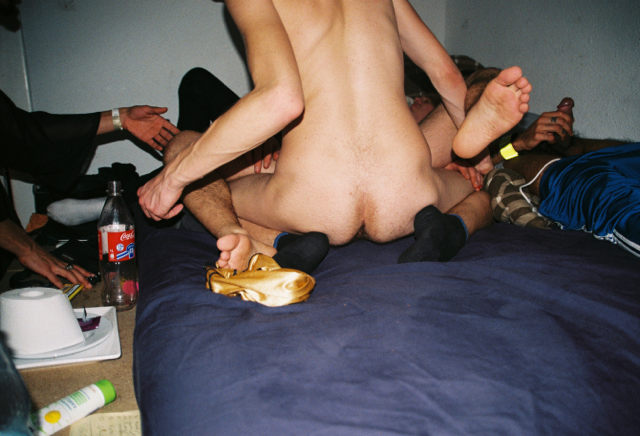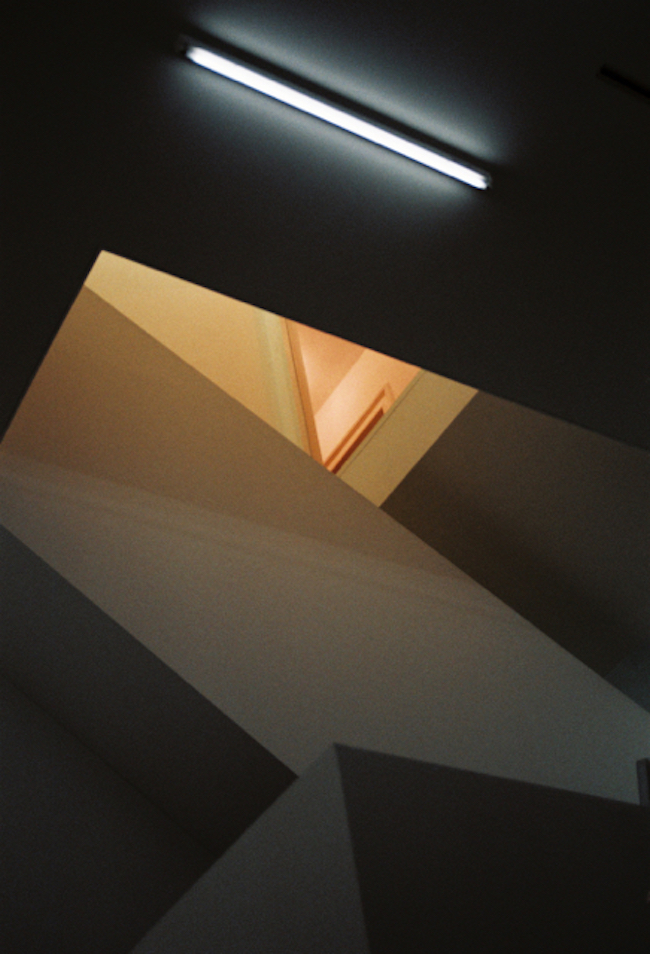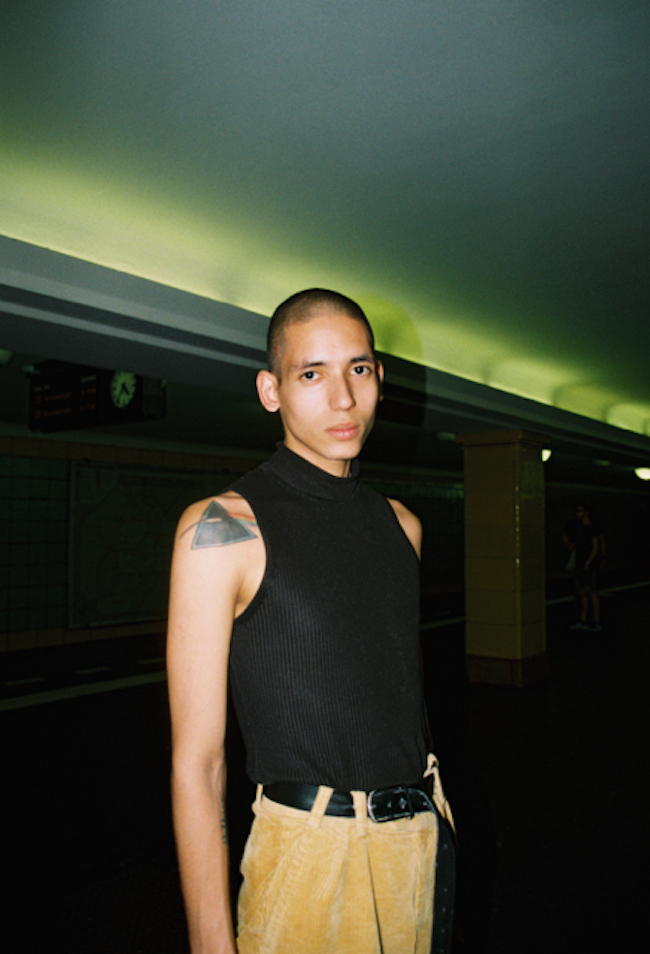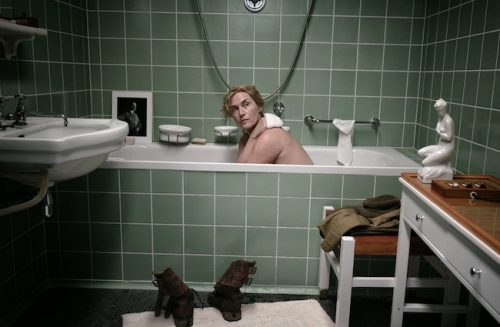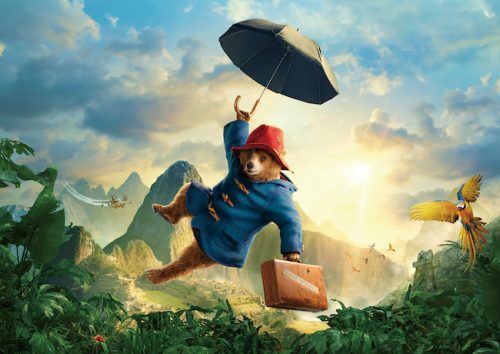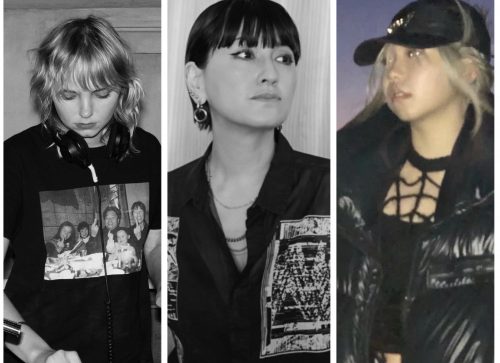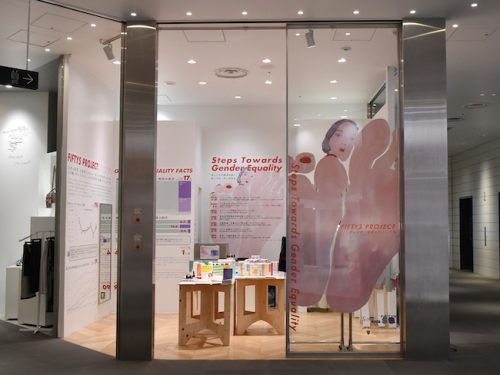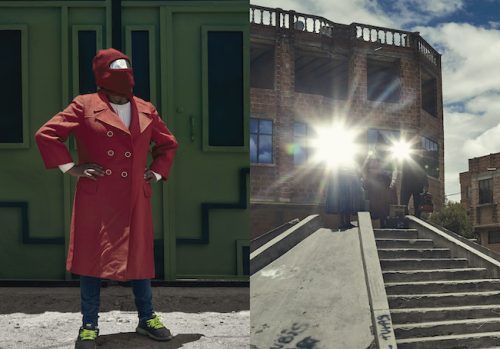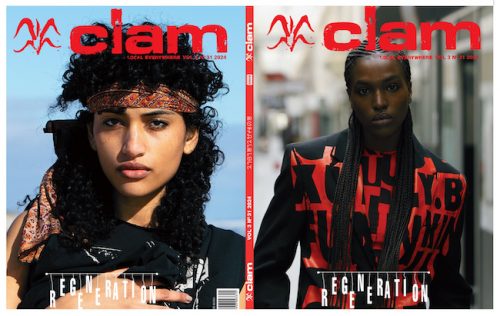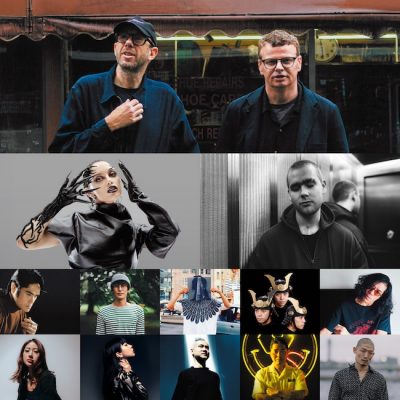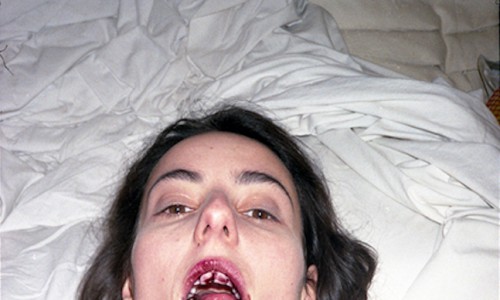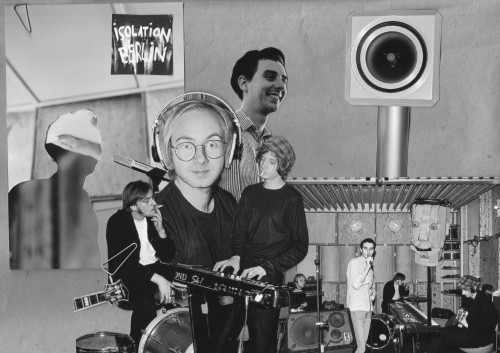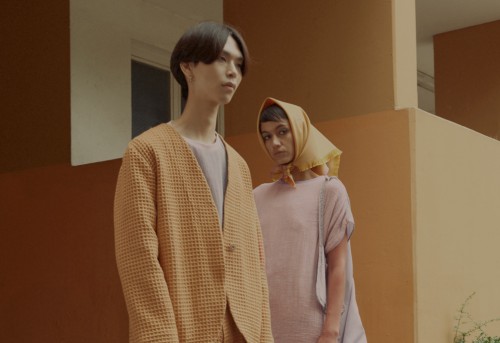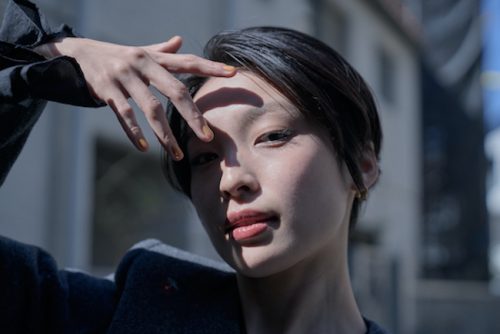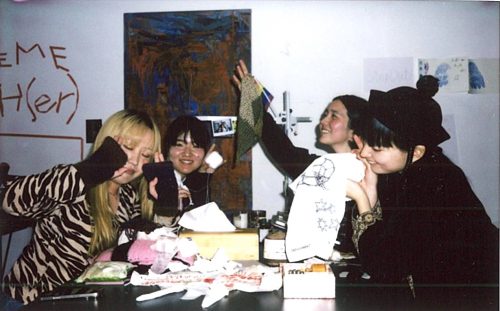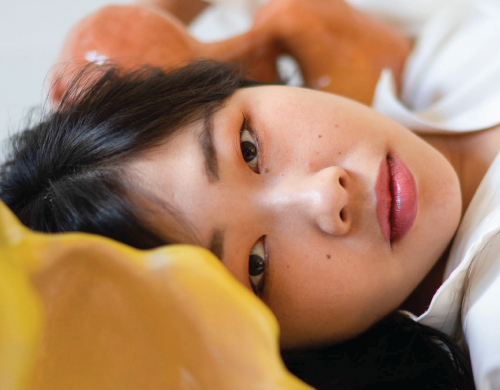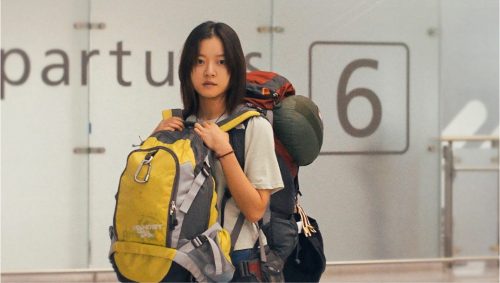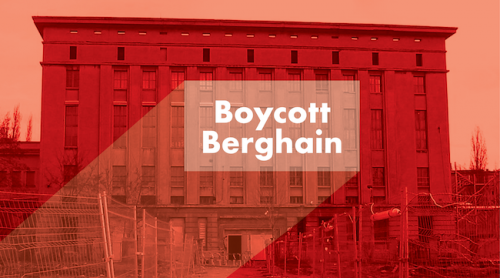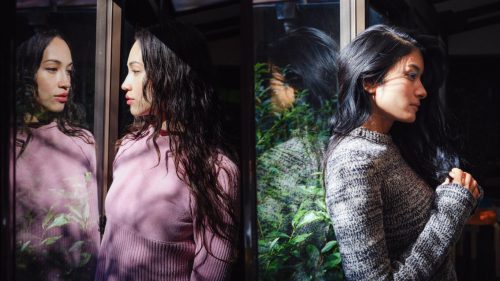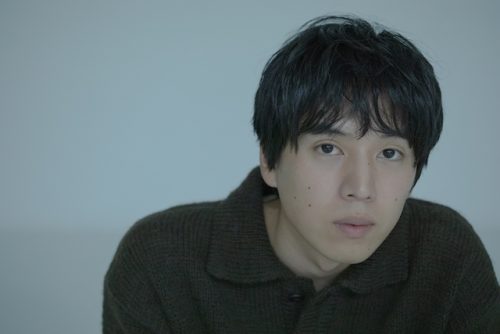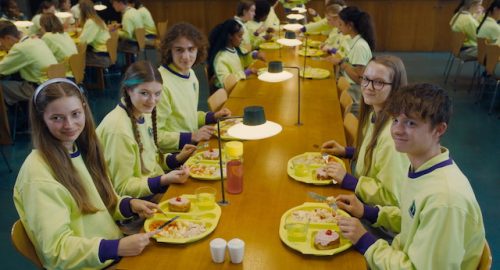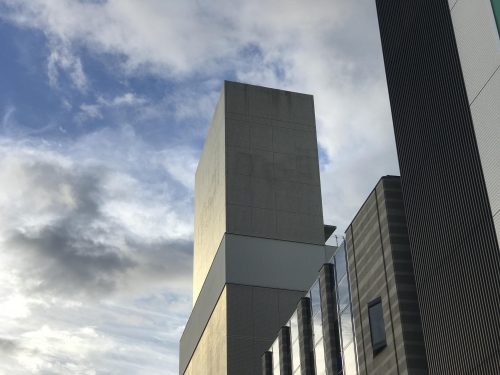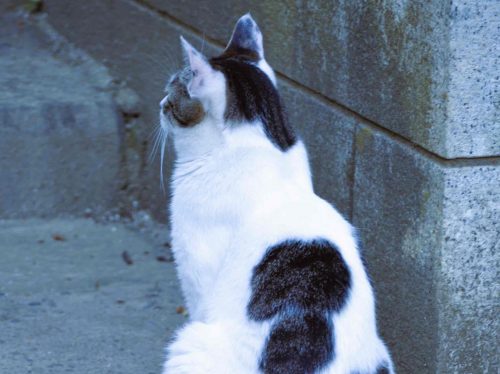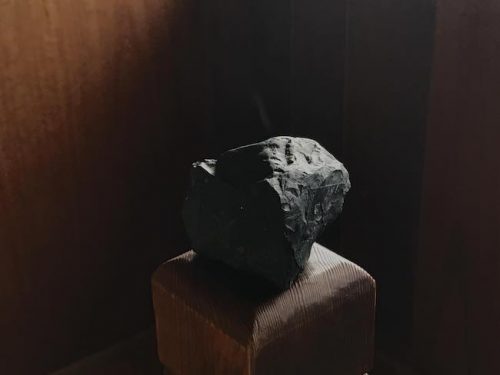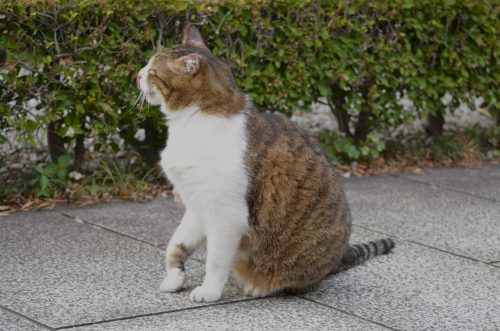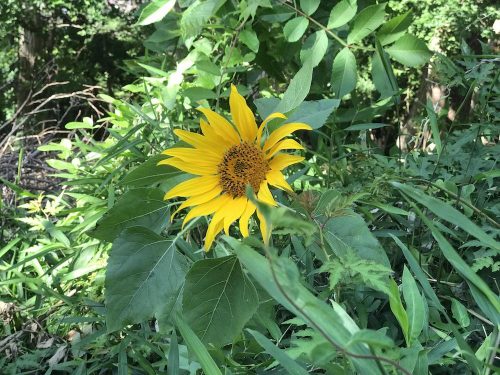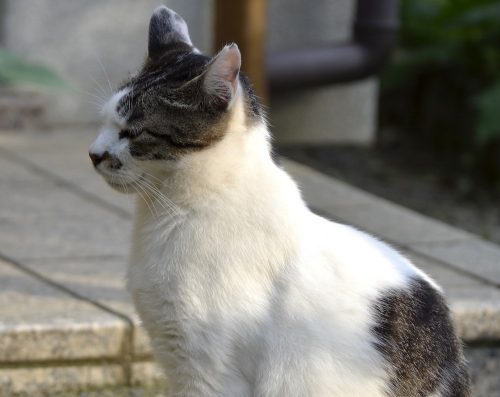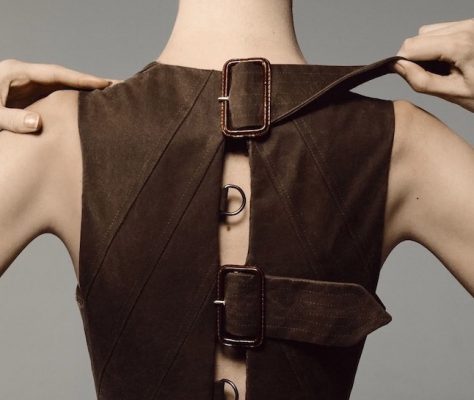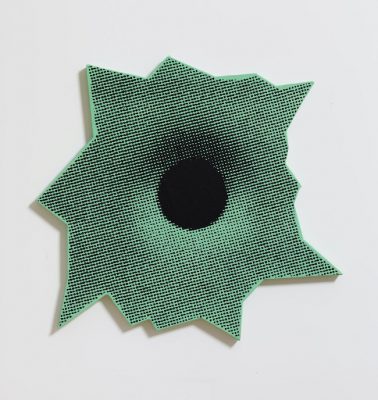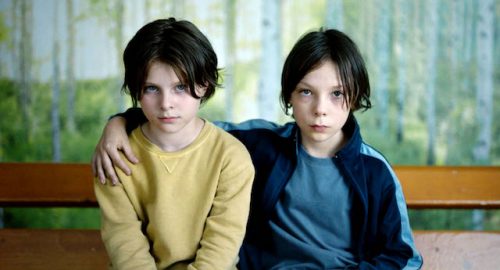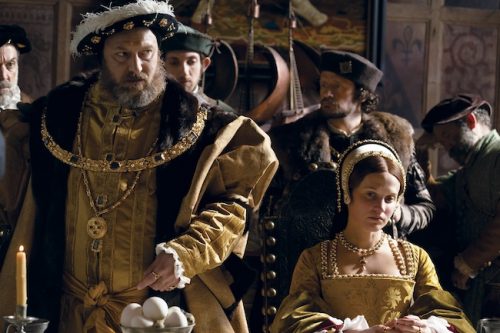ユース、ドラッグ、セクシュアル・リベレーション。目の前に迫ってくるアンダーグラウンドでリアルな光景とそこに漂う儚さ。フォトグラファーGeorge Nebieridze(ジョージ・ネビエリゼ)は、そんなベルリンのひび割れた部分から覗く際どい瞬間を的確に記録し続けている。私たちが普段目にする規制されたSNSやメディア上でのベルリンが太陽であれば、Georgeの写真は静かに真実を照らす月だろう。彼が写真を通して伝えたいこと、被写体との距離感について聞いた。
Youth, drugs, and sexual liberation. A real, underground scene that makes itself visible and a sense of fragility that drifts upon it. Photographer George Nebieridze continues to accurately capture such risky moments he sees when peeping through the cracks of Berlin. If the Berlin that we usually see on regulated social media/media is the sun, George’s photography is the moon that quietly sheds light upon the truth. We asked him what he would like to communicate through his photography, and the sense of distance from his subjects.
ーーまずはあなた自身のこと、写真を撮り始めたきっかけについて教えてください。
George「ジョージア・トビリシ出身、アーティスト一家に生まれたんだ。初めてのカメラは10代の頃に兄からもらったZENIT。ロシア生まれの古くて重いフィルムカメラだったよ。露出などの技術も兄から教わって撮り始めたんだ。それから2~3年後にデジタルカメラを使い始めて、友達やライブ、パーティーシーンを撮影してた」
ーー使っているフィルムカメラは何ですか?
George「Nikon F80。トビリシにいた頃デートしてた彼女が持ってたのを一度借りて以来気に入って、いまではメインカメラとして愛用してる。壊れても壊れても同じモデルを買って使ってるんだよね。少なくとも4回は買い直してて。決してベストなカメラじゃないけど、大好きなんだ」
ーーなぜ故郷ジョージア・トビリシから、ベルリンへ移ったのでしょうか?
George「当時遠距離だった彼女がベルリンにいたし、自分のアートキャリアを積みたくて、2013年秋頃にベルリンへ移ったよ。当時のトビリシはあまりアート環境が整っていなくて、でも自分から何かしたい時期だったんだ」
—First, please tell us about yourself and how you came to start photography.
George “I’m from Tbilisi, Georgia and was born into an artist’s family. My first camera was the ZENIT which I got from my older brother during my teenage years. It was an old and heavy film camera from Russia. My brother also taught me how to work with exposures, and I began shooting from there. Two or three years later, I began using a digital camera and shot my friends, live shows, and party scenes.”
—What film camera do you use?
George “Nikon F80. I have loved it ever since I borrowed one that my girlfriend I dated back when I was in Tbilisi and to this day, I use it as my main camera. No matter how many times it broke, I have always bought the same model and used it. I have probably rebought it at least 4 times. It’s definitely not the best camera, but I love it.”
—What made you move from your hometown Tbilisi, Georgia to Berlin?
George: “My long-distance girlfriend at the time was in Berlin, and I also wanted to gain experience for my art career, so I relocated to Berlin around Fall of 2013. Tbilisi at the time had not much of an artistic environment, but it was a period when I felt I wanted to initiate something.”
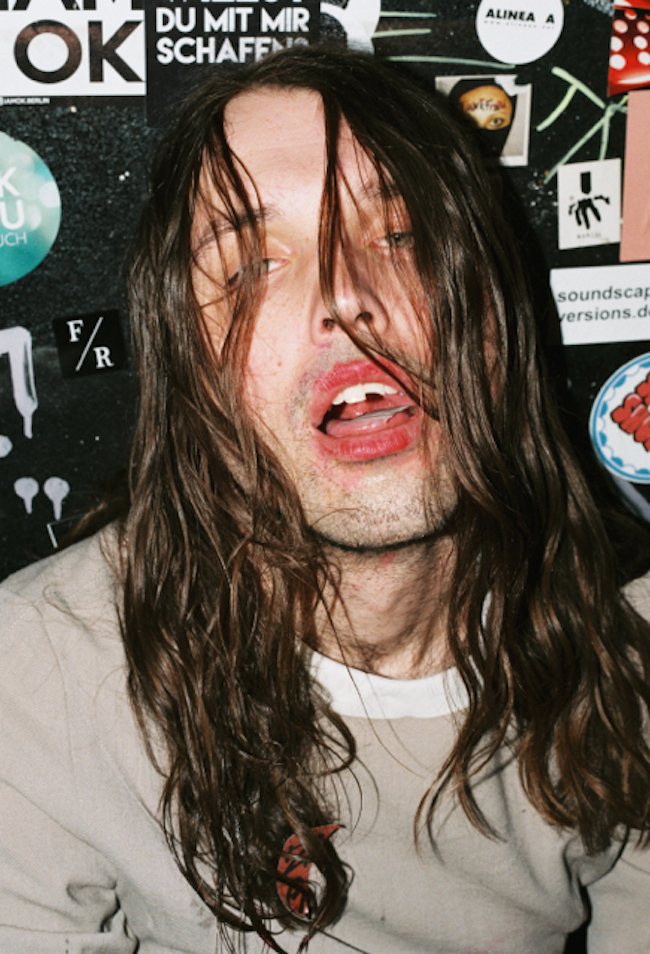
ーーあなたの目に映る日常を記録したドキュメンタリー作品を、毎年写真集にまとめて発表していますよね。
George「”アポストロフィ”シリーズって呼んでいるんだ。ほとんどの写真がベルリンで撮影したもので、『’15』『’16』と撮影した年をタイトルにしてる。いつもタイトルの年の翌年末に発表しているよ。『’15』はオランダ・ロッテルダムのTante Nino Gallery、『’16』はベルリンのパーティーSTAUBの協力を得ているんだ。毎回フィルムを現像した後に、選んだものを特別なフォルダへ入れてたり、時々それを見返して、再セレクトしたりしてる」
ーー”アポストロフィ”シリーズにコンセプトはありますか?
George「特にコンセプトを決めていないんだけど、ディレクションや本のデザイナー含めいつも変えるようにしてるかな。『’15』、『’16』で同じ部分もあるけど、この街でいま何が起きているのか感じ取るようにしてて。同じことばかり耳を傾けていると退屈だからね。もちろん自分の生活も変わっていくし。このシリーズは今後も続けていく予定」
ーーベルリンをテーマとした写真は、どこか表面だけを写していたり、クリーンに見せていたり、コマーシャル化していたりするものをよく見かけます。ただ、あなたの写真を見たとき、リアルすぎて衝撃を受けました。写真を通して伝えたいこと、記録していきたいことはありますか?
George「全てに同じくらい注目することが大事。目の前の被写体にも、横にある木にも、ドラッグにも。よくドラッグやゲイシーンなど目に飛び込んでくる部分だけ見て、スキャンダラスな写真だと捉える人がいるけど、それは違う。全てに同等の価値がある。だから、木のように見慣れている風景にも同じく注目するんだ。見る人たちをそれに気付かせたいし、彼らも目を鍛えなければならない」
—I’m aware you present a photo book every year with documentary works of what you see in your day-to-day life?
George: “I call it the ‘Apostrophe’ series. Most of the photos are shot in Berlin, and I make the titles the year in which they were shot, for example “’15” or “’16”. I always release it a year later from the title, towards the end of the year. I received support from Tante Nino Gallery in Rotterdam, the Netherlands for “’15”, and STAUB, a party in Berlin for “’16”. After I develop the film, I put the selected photos into a special folder, and at times look through them again to reselect the ones I like.”
—Is there a concept for the ‘Apostrophe’ series?
George: “I haven’t decided on a particular concept, but I try to change the direction and designer of the book every time. There are identical elements in “’15” and “’16”, but I try to have a feeling of what is going on in this city at this moment. It’s boring if you only look into the same things. My lifestyle changes as well, obviously. I plan to continue this series hereon.”
—In photos based off Berlin, I often see shots in which only the surface is shown, is presented clean, or is commercialized. However, when I saw your photos I was surprised at how real they were. Do you have things that you would like to communicate or record through your photography?
George: “It’s important to pay attention to all things with the same level of attention. To the subject in front of you, to the tree on the side, and the drugs. Often times there are people who only see elements like drugs and the gay scene that pop out and think the photos are scandalous, but that’s wrong. There is equal value in everything. Therefore, I pay just as much attention to scenes we are used to seeing, like trees. I want the viewers to notice that, and they have to train their eyes as well.”
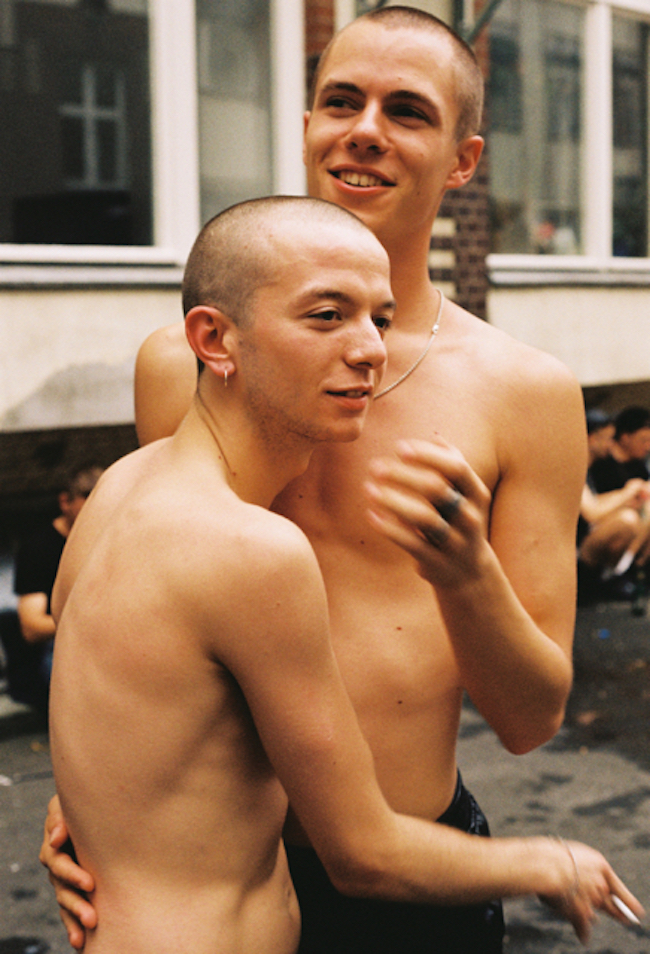
ーー被写体はどうやって見つけていますか?みんな友達でしょうか?
George「もちろんほとんど知ってるけど、だからといってみんな友達って訳でもない。自然とその場の流れで見つけて撮ってる。写真を撮った後に話したり、連絡先を交換したりして、写真が人を繋げてくれることはたくさんあるよ」
ーーかなり密に切り込んだ写真が多いですが、被写体との距離感についてお聞きしたいです。
George「親密さや距離感は個々に異なっている。愛のようにね。例えば一言に愛といってもそれが家族、友達、恋人、セックスパートナーでは異なるもの。でもそれぞれが親密な関係だ。私の作品には友達としての親密さ、セクシャルな親密さを写したものもある。たまに実際はそんなに親しい関係じゃないのに写真では距離感がないときもあるし、一方で実際は親しい関係なのに写真では距離感があるとか。たとえ知らない人でも距離を縮めて撮ることもできる。とにかく状況によるし、ミックスされているんだ」
—How do you find your subjects? Are they all your friends?
George: “I obviously I know most of them, but that doesn’t mean they are all my friends. I go with the flow of the scene, find someone and shoot. There are many times when photography connects me to people – we will talk after shooting and exchange contacts.”
—There are many intimate photos, but I would like to ask you about the sense of distance you maintain between yourself and the subject.
George: “Intimacy and distance varies for each piece. Just like love. For example, even ‘love’ varies among family, friends, lovers, and sex partners. But each relationship is still intimate. My works capture intimacy as friends, and even sexual intimacy. Sometimes there won’t be much physical distance between myself and the subject in the photo, even when my relationship is not as close to the subject in person. On the other hand, my relationship to the subject can be very close, yet there may be physical distance in the photo. I sometimes get very close in distance to shoot, even if I don’t know the person. It all depends on the circumstances, and they’re all mixed.”
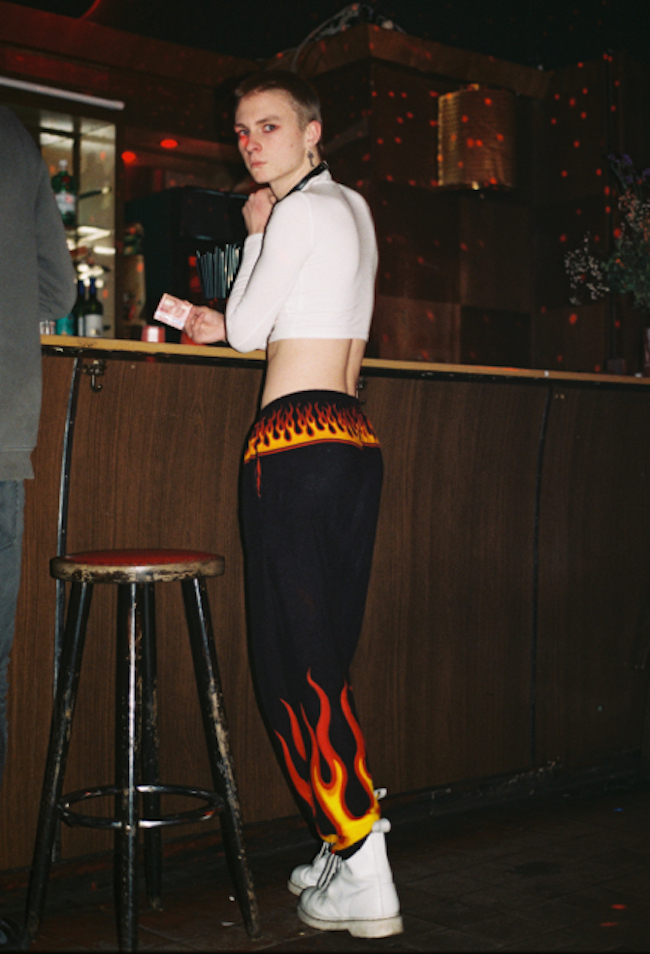
ーーいまのベルリンカルチャー、特にユースについてどう思いますか?
George「ベルリンはカルチャーもユースも個性的でしっかり生きている。でも、ユースはベルリンに限らずどこにいてもそうあるべきだと思う。例えば、70年代のヒッピーやパンクのように力強くクレイジーにね。いつの時代も新しいカルチャーが生まれ、新しい音楽、ドラッグ、スニーカー、Tシャツがどんどん出てくる。でも僕は別にユースカルチャーに流されてないかな。いつも興味は変わるし、好奇心が強いから」
ーー撮影中に美しさを感じますか?それはどんなものでしょうか?
George「もちろん、美しくないものなんてこの世にないよ。写真を通して、すべてのものから美を見つけようとしてる。ドラッグやセックスだって、とてもフォトジェニック。かといって完璧に美しくある必要はない。いかに心を自由にするか、そうすればすべて美しく感じるはずだよ」
ーーあなたにとって写真とは?
George「ただの表現手段の一つ。もしカメラが発明されていなかったら、絵を描いたり、音楽をしていただろうし。カメラはツールに過ぎないからね」
ーー写真は時代の変遷とともに価値やあり方が変わるものですが、あなたが撮る写真とそれを見る他者との関係性についてどう思いますか?
George「誰でも簡単に写真を撮影できるようになった分、自由に使える消耗品化してるね。でも、僕の写真はいいワインのように年月を重ねて熟成していくもの。そこに価値を感じるし、興味がある。だから10年後に”アポストロフィ”シリーズを見た人がどう感じるのかとても気になるんだ。例えば60年代に撮影されたジミ・ヘンドリックスの写真を見た人が素晴らしい写真と感動するように。きっとそうなるだろうね」
—What do you think of the Berlin culture today, especially the youth generation?
George: “Youth culture, culture in general is unique and very prominent in Berlin. However, I believe youth culture should always be so, not just in Berlin but no matter where you are. For instance, strong and crazy like the 70s hippies and punk culture. Every generation gives birth to a new culture, new music, drugs, sneakers, T-shirts…they keep coming. But I’m not necessarily influenced by youth culture. My interests always change, and I’m very curious.”
—Do you feel a sense of beauty while shooting? What is that like?
George: “Of course, there’s nothing that isn’t beautiful in this world. I try to find beauty in everything through photography. Even drugs and sex are very photogenic. But that doesn’t entail that it must be perfectly beautiful. The more you let your soul be free, the more everything will feel beautiful.”
—What is photography to you?
George: “Just one way of expression. If cameras weren’t invented, I must have painted or made music. A camera is merely a tool.”
—Photography changes its values and ways along with changing times, but what do you think of the relationship between the photos you take and the viewers?
George: “Since anybody can easily shoot photography today, it’s become a consumable, disposable thing that you can use freely. But my photos age with time, months and years, just like fine wine. I find value in that, and I’m interested. That’s why I’m curious to see how people will feel about the ‘Apostrophe’ series in 10 years. Like how people who see a photo of Jimi Hendrix in the 60’s are impressed and say it’s an amazing photo. I imagine it’ll be like that.”
—Finally, please tell us about any news we should look out for.
George: “I plan to release my newest work, “’17” at the end of the year. I also would like to curate a performing arts event. I’ve only written it in my notebook as a plan, but it is a project I would like to make happen.”
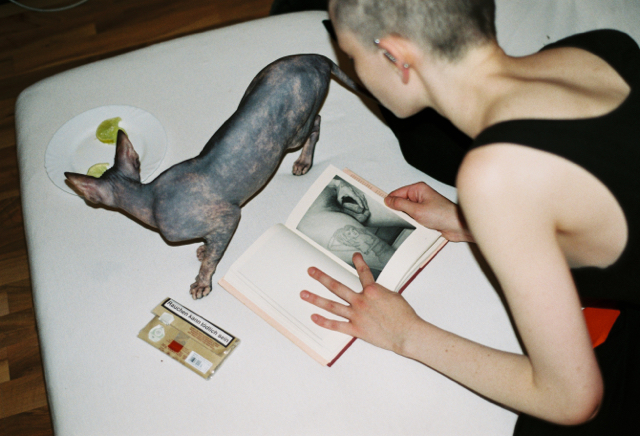
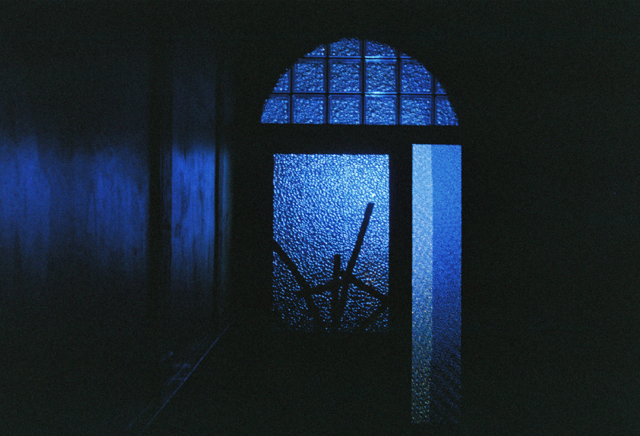
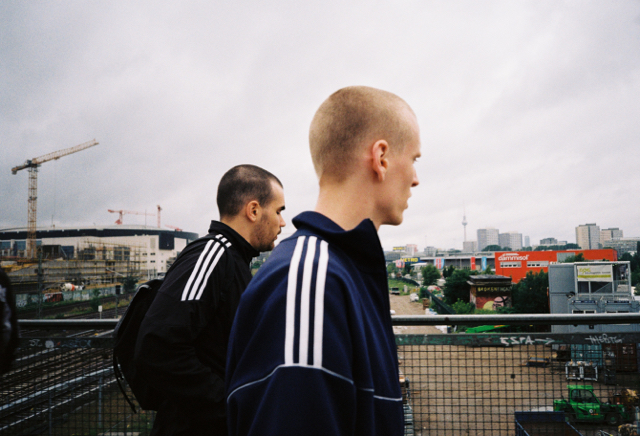
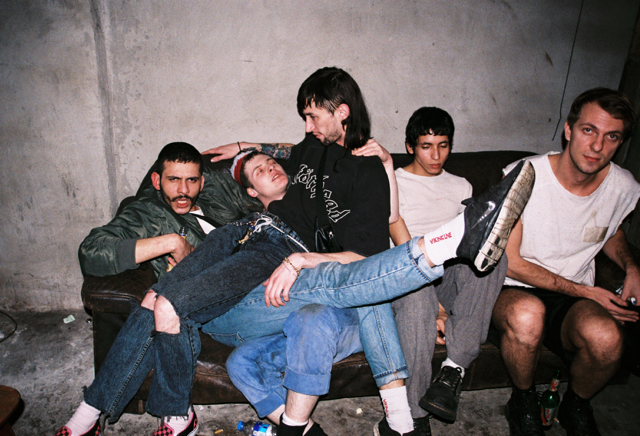
George Nebieridze
https://www.nebieridze.de
https://www.instagram.com/nebieridze.de/
photography George Nebieridze
text Yukiko Yamane
